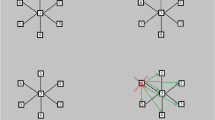Abstract
Analyses of two climbing tree stand accidents are presented to show that serious imperfections in the chains would not have produced the failures had the tree stands been used within rated capacity. Stress analysis and tests demonstrated that roller chain with cracked links could operate at rated capacity without further crack growth and showed that loads approximately three times rated capacity were required to cause the pullout of an improperly staked pin. Although the chains in the tree stands involved in both accidents had serious imperfections, the imperfections did not produce a failure of the product within the rated capacity of the tree stands. However, operating conditions in excess of the rated capacity exposed the imperfections and led to the failures. Neither imperfection should have been considered a defect because they did not reduce the capacity of the tree stands below the rated capacity.
Similar content being viewed by others
References
W.T. Becker, R.J. Shipley, and D. Aliya: “Use of the Term Defect,” J. Failure Anal. Prevent., 2005, 5(2), pp. 16–20.
A. Blake: “Curved Beams and Hooks,” Practical Stress Analysis in Engineering Design, Marcel Dekker, Inc., 1982, chapter 28, pp. 329–49.
S.P. Timoshenko and J.M. Gere: Mechanics of Materials, D. Van Nostrand Company, New York, 1972, pp. 335–37.
Author information
Authors and Affiliations
Rights and permissions
About this article
Cite this article
Clarke, C.K., Halimunanda, D. Imperfections in tree stand failures. J Fail. Anal. and Preven. 6, 24–30 (2006). https://doi.org/10.1361/154770206X99299
Received:
Revised:
Issue Date:
DOI: https://doi.org/10.1361/154770206X99299




